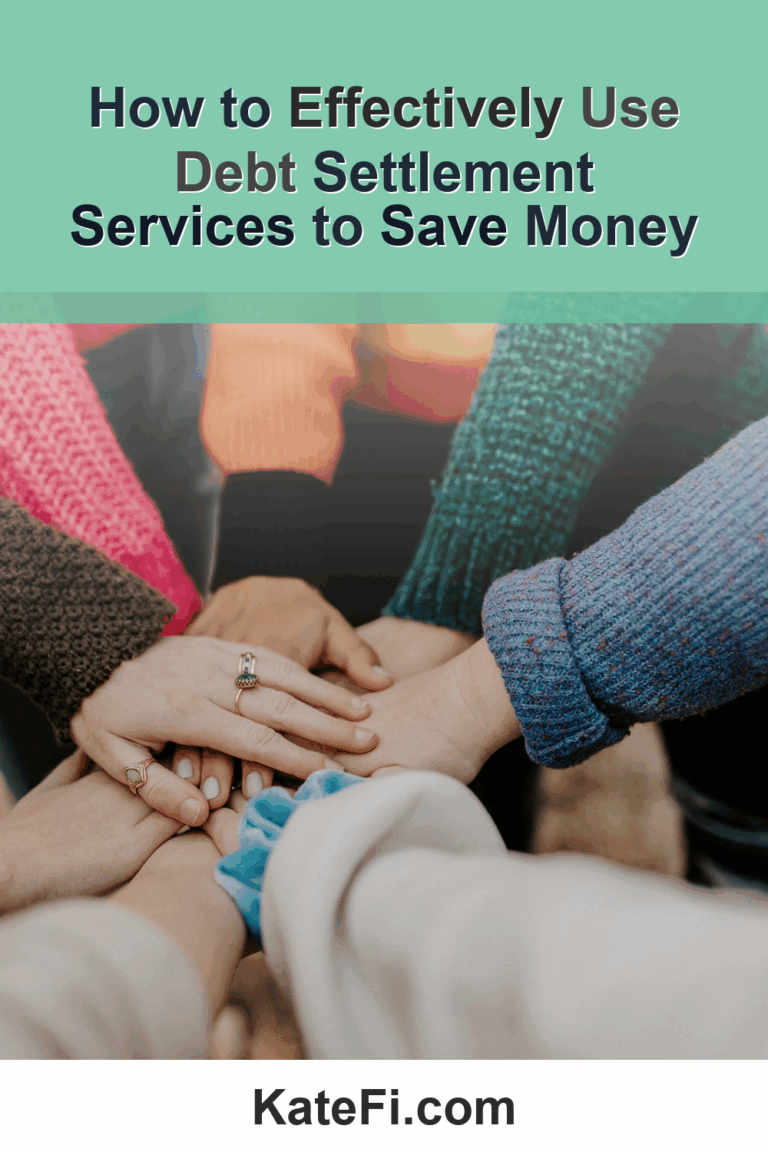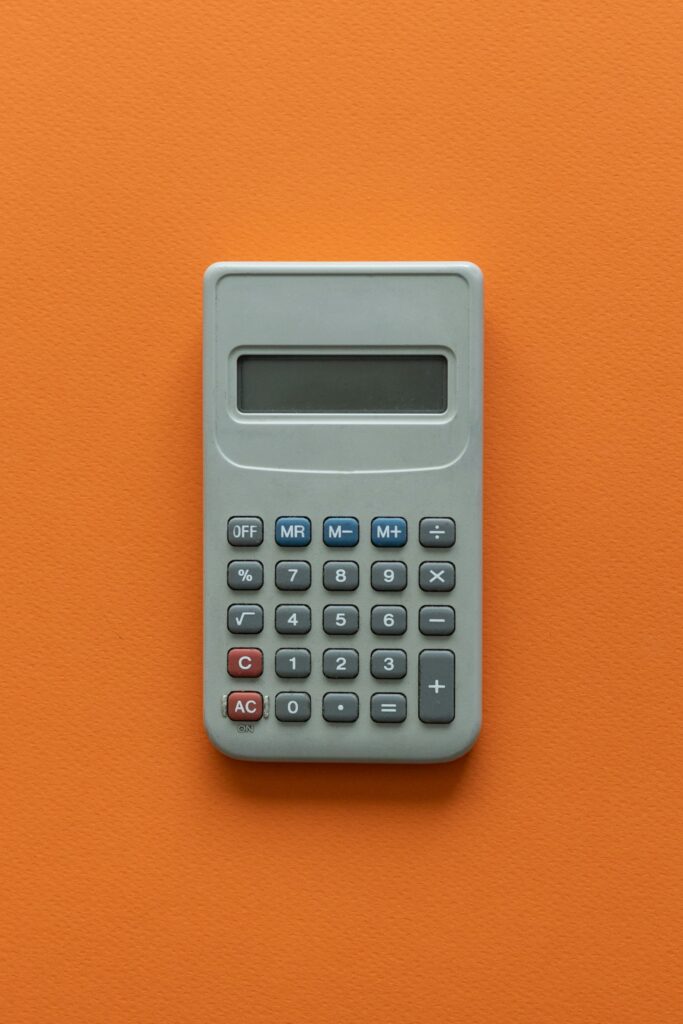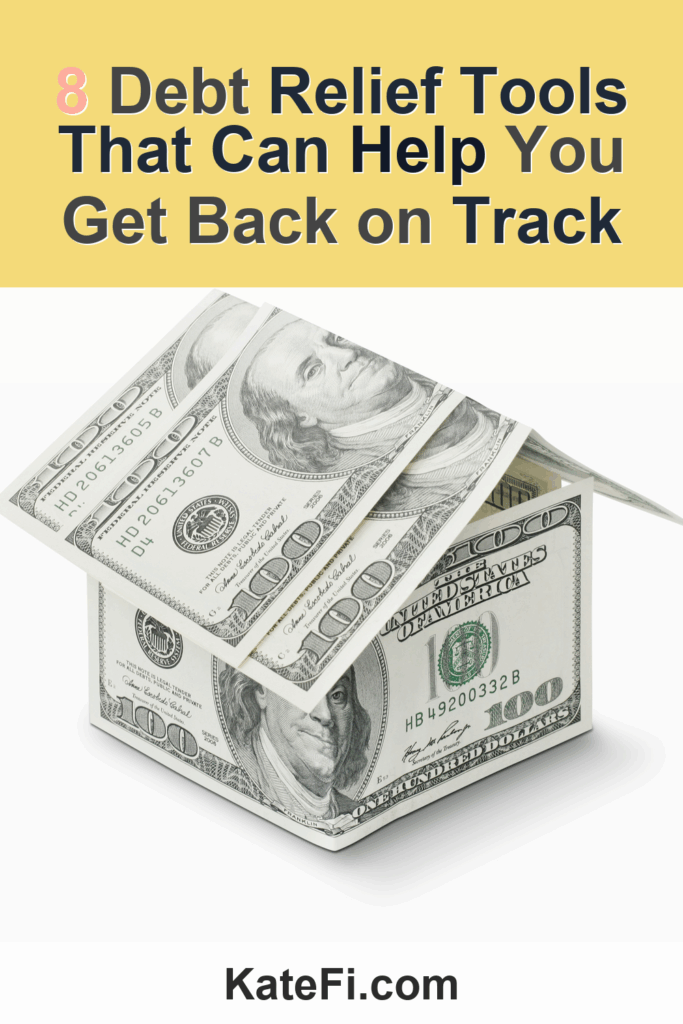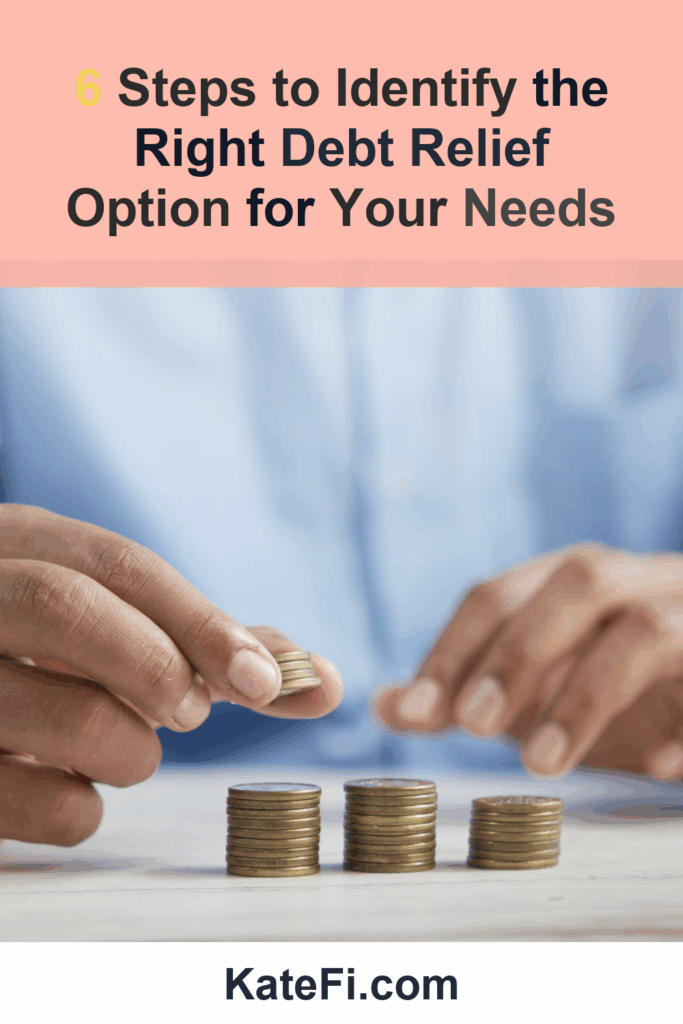How to Effectively Use Debt Settlement Services to Save Money
If you’re one of the millions struggling with overwhelming debt, you’re not alone. Many individuals find themselves in a situation where interest rates and fees are piling up, making it increasingly challenging to manage payments. However, there are solutions available, and debt settlement is one of the most effective options to consider. This guide will provide you with a step-by-step roadmap to navigate debt settlement services and how they can help you save money while getting back on track financially.
Love our content? Show your support by following us — pretty please!🥺
FOLLOW ON PINTEREST
Hi! I’m Kate, the face behind KateFi.com—a blog all about making life easier and more affordable.
Understanding Debt Settlement
Understand pros/cons of settlement vs consolidation vs DMP for your exact mix of debts.
Not available in IL, KS, OR, TN, UT, WV.
Debt settlement involves negotiating with creditors to reduce the total amount of debt owed. While it may sound simple, there are intricacies involved, including potential impacts on your credit score and legal considerations. Before diving in, it’s essential to weigh your options and understand when debt settlement might be the right choice for you.
The Snowball Effect: How Interest and Fees Accumulate
Imagine your debt as a snowball rolling down a hill—it gains mass and speed with every twist and turn. This metaphor is especially relevant when it comes to interest rates and late fees. A missed payment can lead to increased interest rates, which can compound your debt exponentially.
Let’s say you have a credit card balance of $5,000 with a 20% APR. If you only make the minimum payment, you’ll find that a substantial portion of your payment goes toward interest rather than reducing the principal balance. As the months go by, the situation worsens, and before you know it, you could be stuck paying hundreds, if not thousands, more than your original debt.
The Roadmap: Settlement vs. Debt Management Plan (DMP) vs. Consolidation
When considering your options, it’s crucial to evaluate debt settlement against other strategies like Debt Management Plans (DMPs) and consolidation loans. Here’s a simple comparison table to guide your decision:
| Option | Debt Settlement | Debt Management Plan (DMP) | Debt Consolidation |
|---|---|---|---|
| How It Works | Negotiates a reduced payoff with creditors | Works with a credit counselor to manage payments | Combines multiple debts into a single loan |
| Impact on Credit | Can negatively affect credit | May improve credit over time | May have a temporary negative impact |
| Duration | Typically takes 2-4 years | 3-5 years | Depends on loan terms |
| Fees | Varies; usually a percentage of settled debt | Monthly fees, but typically lower than credit card interest | Loan interest rates apply |
| Eligibility | Not guaranteed; may vary by creditor | Must be able to commit to a budget | Depends on creditworthiness |
Decision Tree: What’s Best for You?
To determine the best course of action, consider the following questions:
- Are you able to make minimum payments on your debts?
- Yes: Consider a Debt Management Plan (DMP).
- No: Proceed to the next question.
- Do you have significant financial hardship, such as job loss or medical bills?
- Yes: Debt settlement may be suitable for you.
- No: A consolidation loan might be a better option.
- Are you willing to risk your credit score for potential debt relief?
- Yes: Debt settlement may be your best option.
- No: Explore DMPs or consolidation loans instead.
This decision tree can serve as a guide, but remember that individual circumstances will dictate the best path forward.
✅ See If You Qualify for Debt Relief
How to Start the Debt Settlement Process
Once you’ve decided that debt settlement is right for you, follow these steps to get started:
Step 1: Gather Your Documents
A smooth debt settlement process begins with organization. Here’s a checklist of essential documents you should gather:
- Current account statements for all debts
- Pay stubs or proof of income
- Monthly expenses (rent, utilities, groceries, etc.)
- Tax returns from the past two years
- Any communication with creditors regarding your debt
These documents will provide a clearer picture of your financial situation, allowing debt settlement specialists to advocate on your behalf more effectively.
Step 2: Seek Professional Help
While some individuals may attempt debt settlement on their own, enlisting professional help can increase your chances of success. Companies like KateFi.com offer free consultations to review your options and discuss potential strategies tailored to your situation. It’s essential to work with a reputable service to avoid scams and ineffective solutions.
✅ See If You Qualify for Debt Relief
Step 3: Create a Plan
Your debt settlement professional will assist you in developing a realistic plan for negotiating with creditors. This plan typically includes:
- Determining a reasonable settlement amount
- Prioritizing debts based on interest rates and balances
- Establishing a timeframe for negotiations
Step 4: Negotiate
Once your plan is in place, your debt settlement team will negotiate with your creditors to settle debts for less than what you owe. Keep in mind that results can vary, and patience is crucial, as negotiations may take time.
Step 5: Monitor Your Credit
As your debt settlement progresses, it’s essential to keep an eye on your credit score. Settling debts can negatively impact your credit, but it’s generally less damaging than bankruptcy. If you’re aware of the changes and manage them proactively, you can work toward rebuilding your credit over time.
Credit Impact Discussion
It’s important to understand that engaging in a debt settlement program can negatively affect your credit score. Each settled account may show as “settled for less than owed,” which can lower your score initially. However, taking control of your debts and reducing your overall balance can ultimately be beneficial for your financial health in the long run.
To ensure a faster review process, have the following documents on hand:
- Identification (e.g., driver’s license)
- Social Security Number
- Proof of income and expenses
- Details on all debts (including amounts owed, interest rates, and minimum payments)
Frequently Asked Questions
What You’ll Learn on the Call
- Estimated timeline and monthly payment range
- How credit may be affected in the short term
- What documents to gather to move faster
Not available in IL, KS, OR, TN, UT, WV.
How long does debt settlement take?
The duration varies based on individual circumstances and creditor cooperation, but generally, it can take anywhere from 2 to 4 years.
What fees are associated with debt settlement?
Fees can vary based on the amount of debt and the service you choose. Be sure to discuss fees upfront with your chosen company.
Will my creditors stop calling?
Once you’ve officially enrolled in a debt settlement program, creditors are usually required to cease collection calls. However, this may not happen immediately, so it’s essential to be prepared for some continued communication initially.
What if a creditor won’t negotiate?
If a creditor refuses to settle, your debt settlement professional can help strategize the best approach, which might include focusing on other debts or exploring additional options like filing a complaint.
Conclusion: Take Control of Your Financial Future
Debt can feel insurmountable, but with the right strategy, it’s possible to regain control of your finances. If you’re considering debt settlement, remember to weigh your options carefully and seek professional guidance.
✅ See If You Qualify for Debt Relief
By gathering your documents, creating a solid plan, and working with professionals who understand the intricacies of debt settlement, you can slow the snowball of interest and fees, paving the way for a brighter financial future.
Important: This content is for education only—not legal, tax, or financial advice. Results and eligible programs vary by situation and state. Fees apply if you enroll and complete a program. Debt relief can affect credit; missed payments may lead to collections/lawsuits. Not available in IL, KS, OR, TN, UT, WV.






















